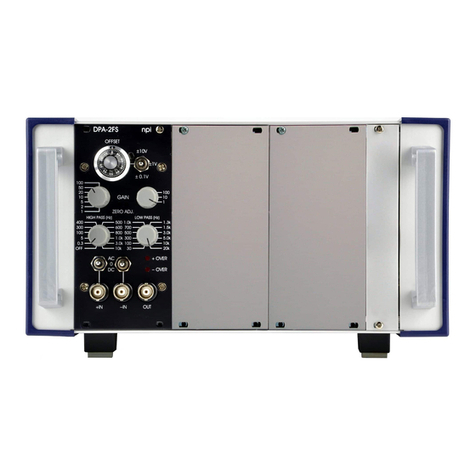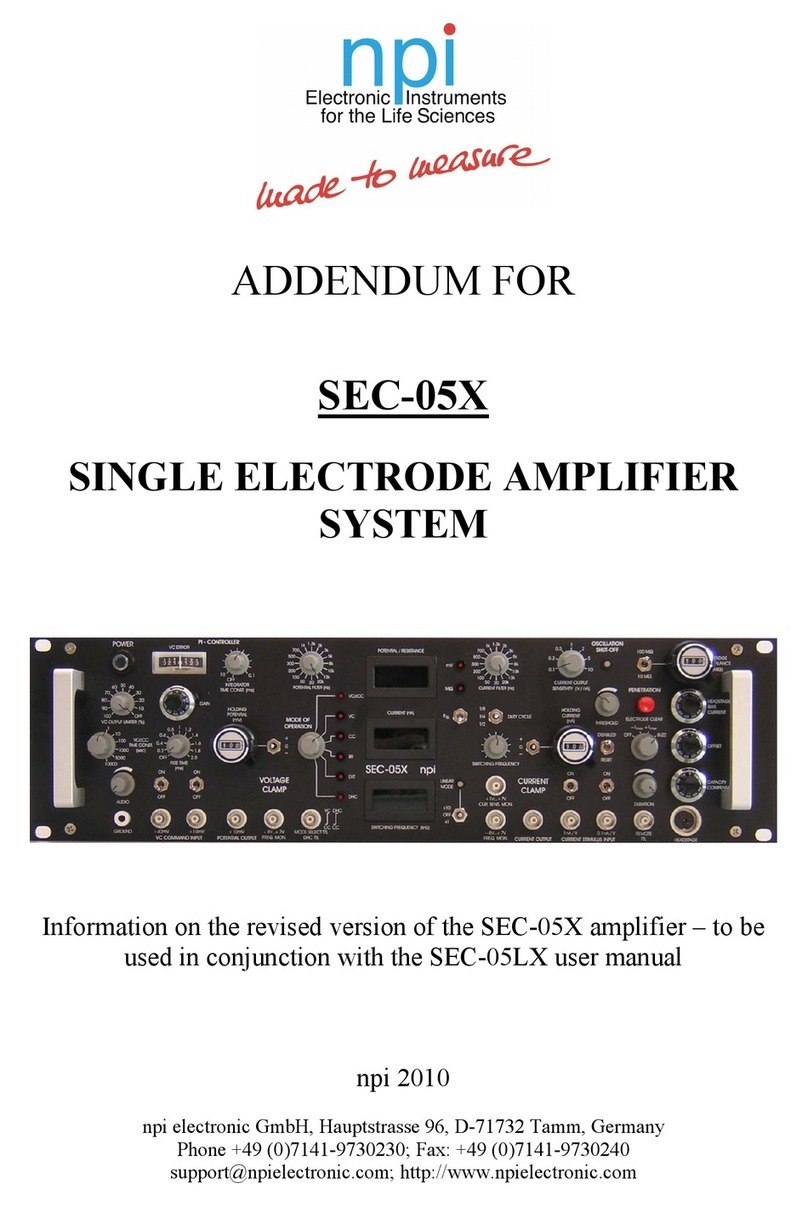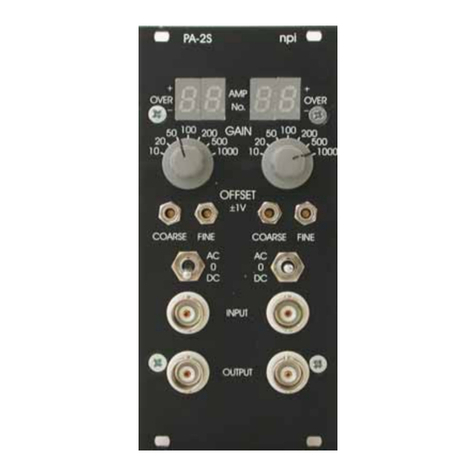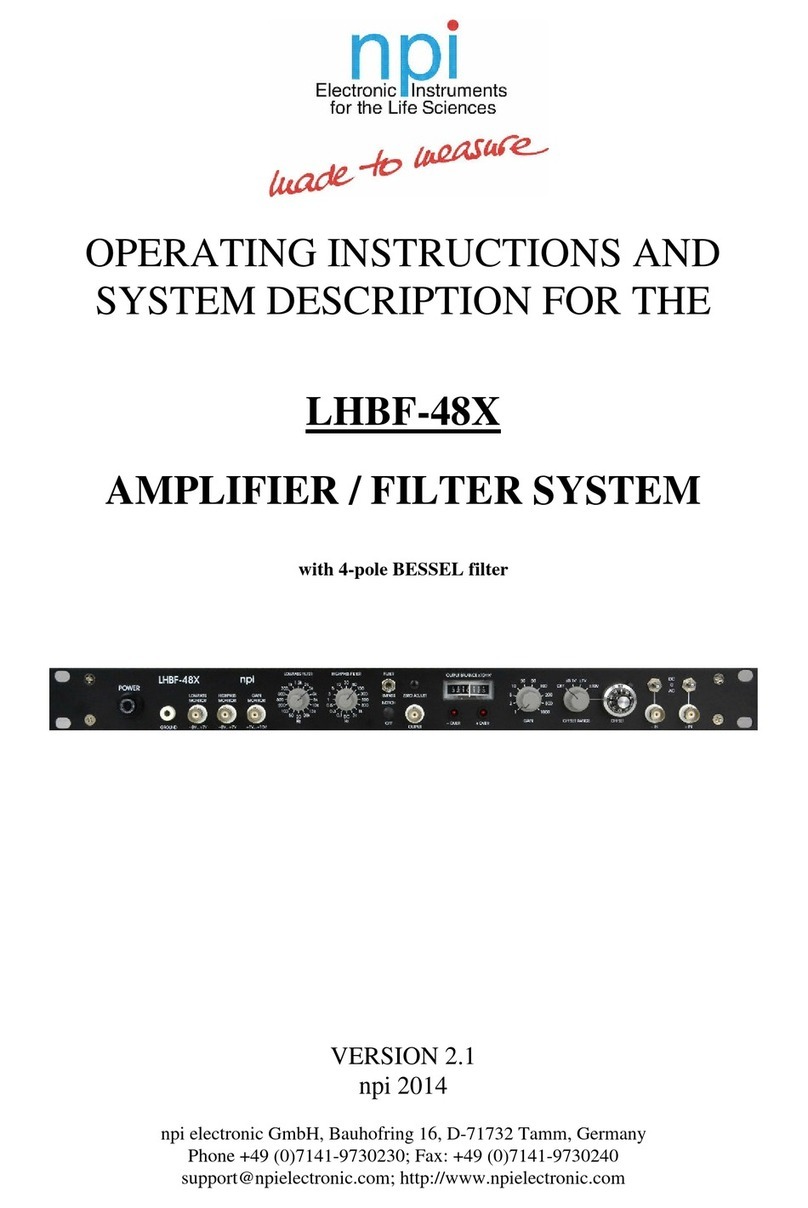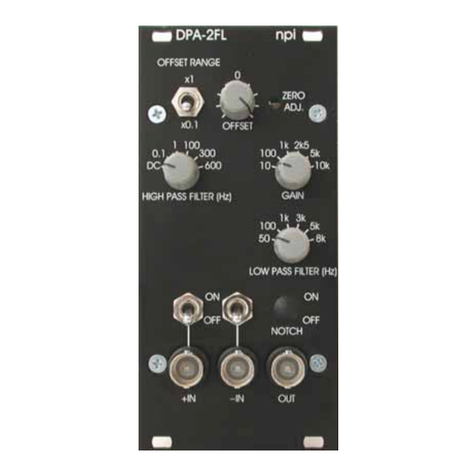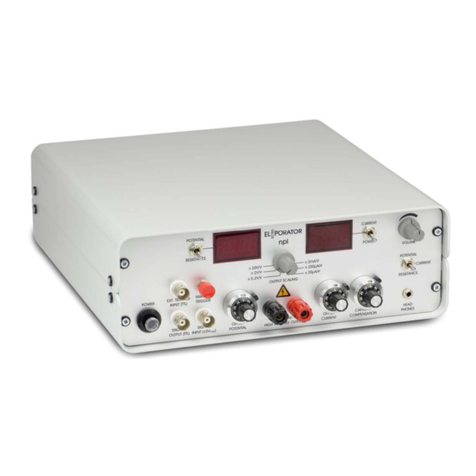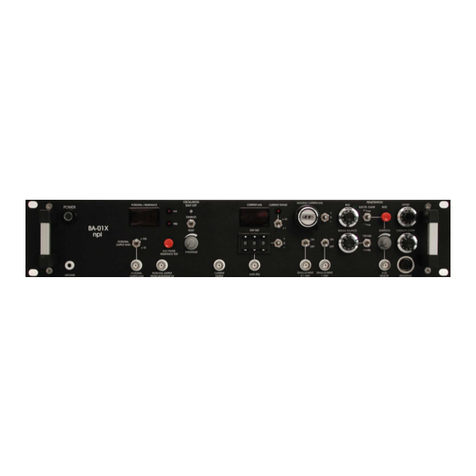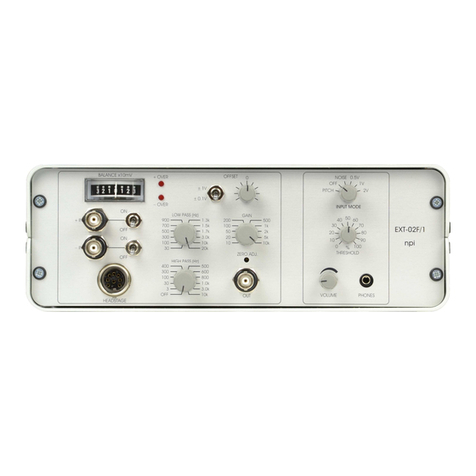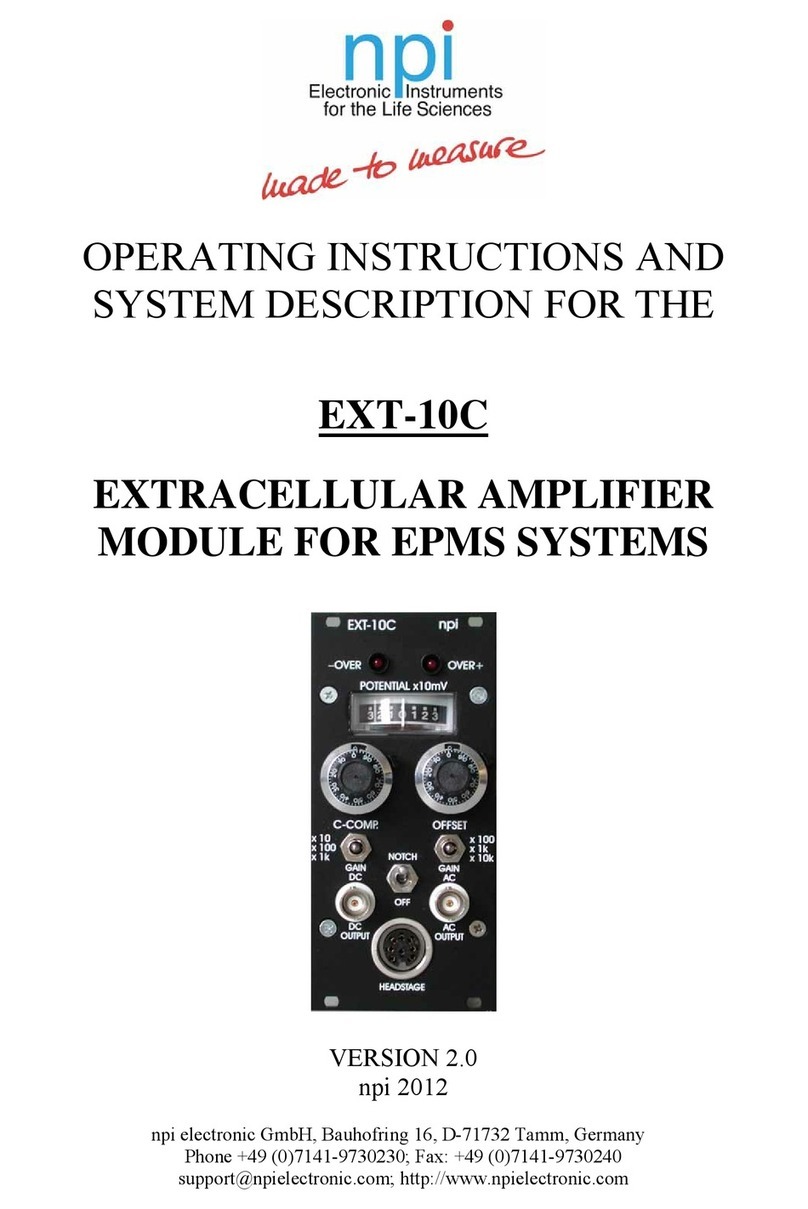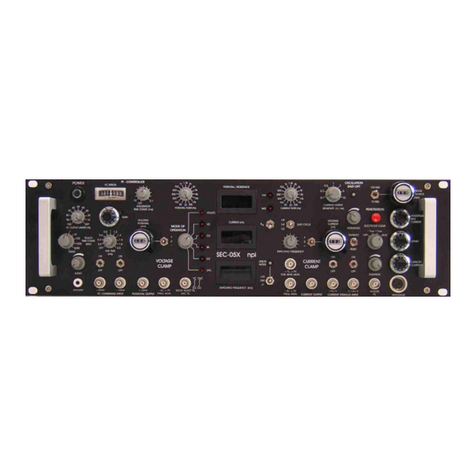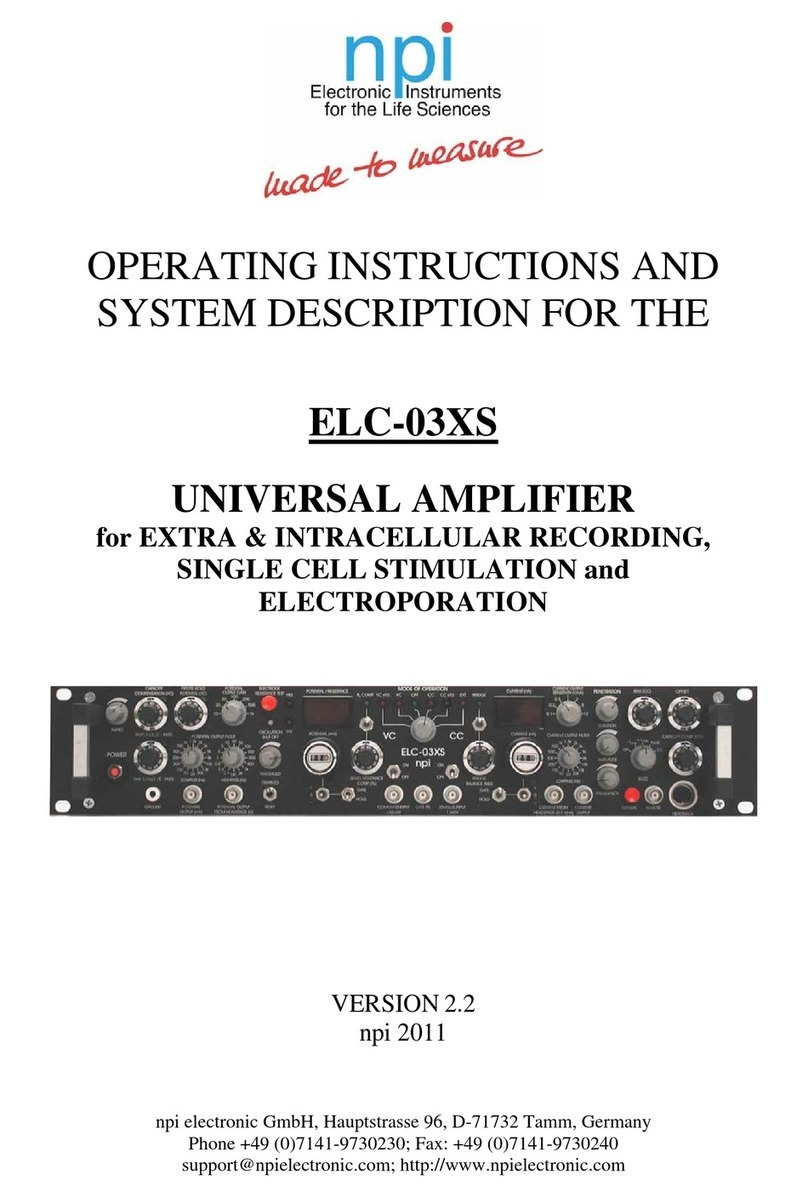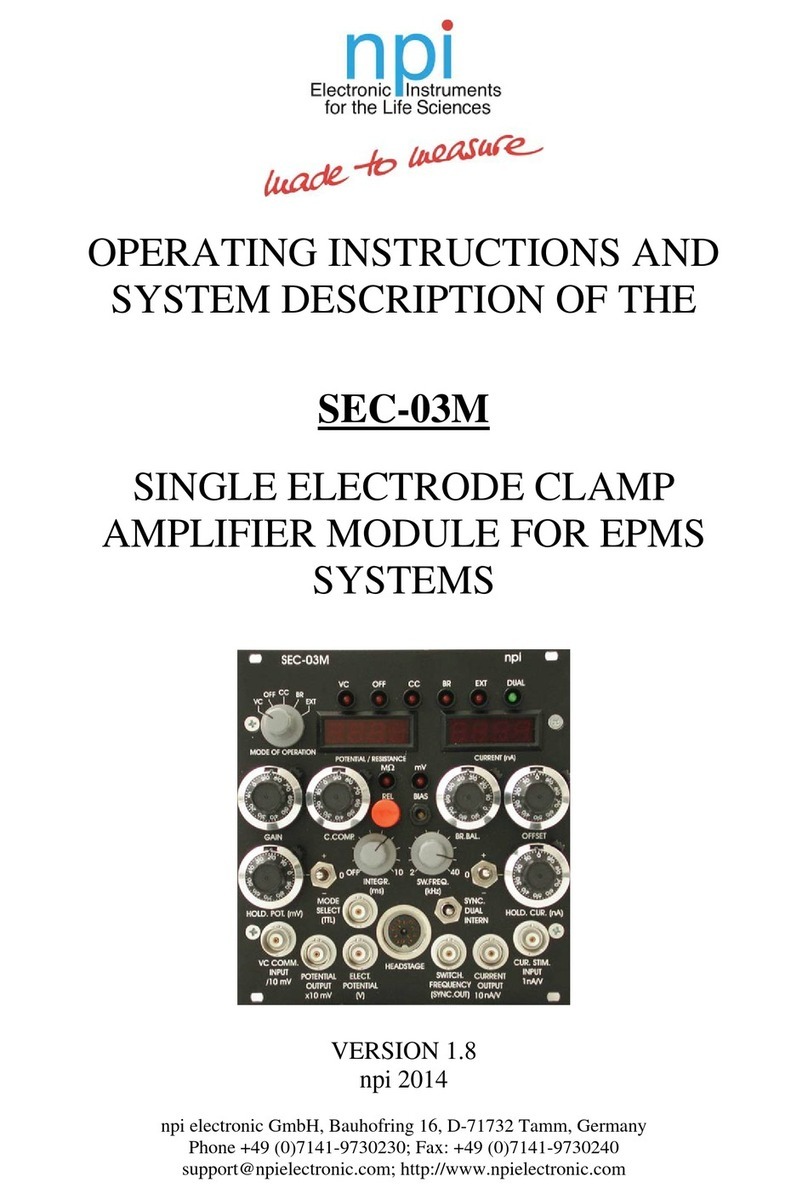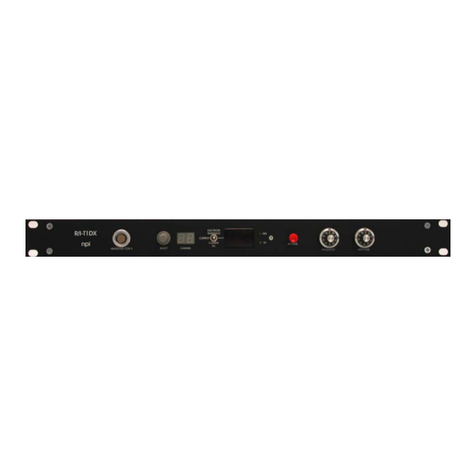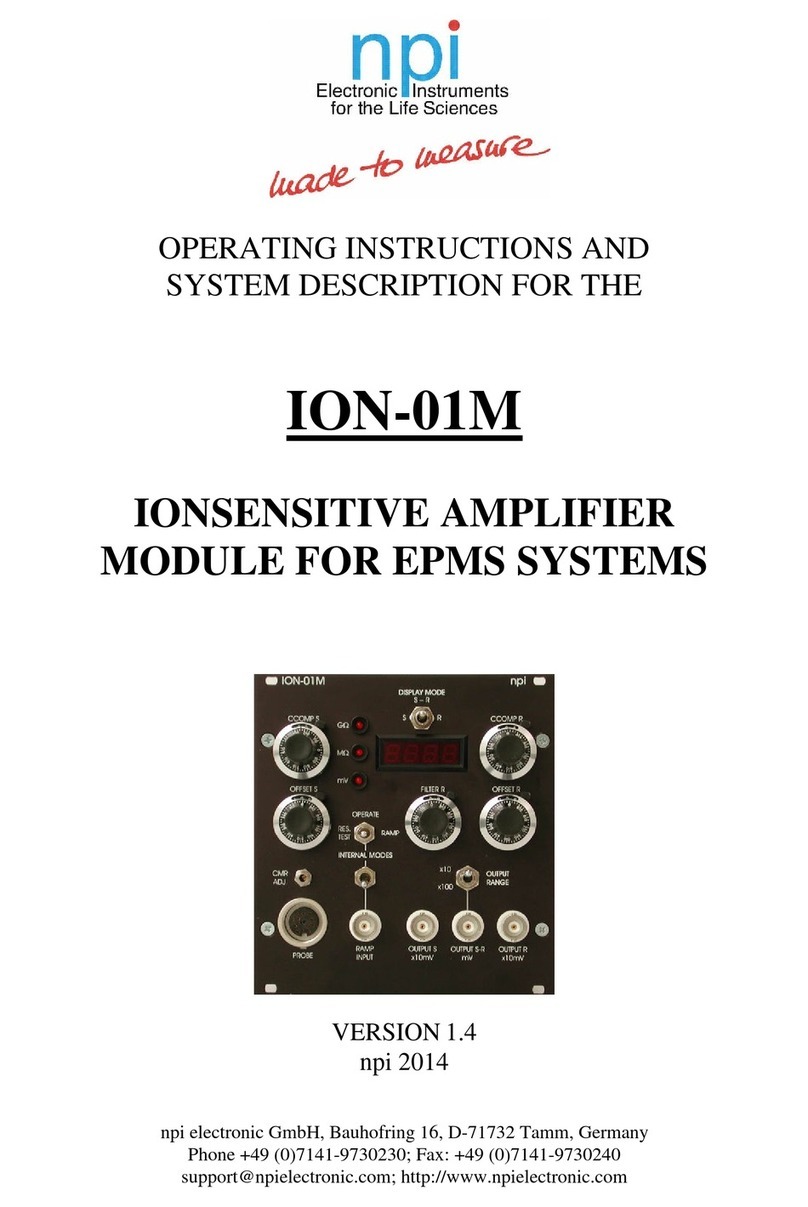
TEC-B-01 User Manual
____________________________________________________________________________________________________________________________
__________________________________________________________________________________
version 1.1 page 2
Table of Contents
1.Safety Regulations...............................................................................................................3
2.TEC-B-01 ............................................................................................................................4
2.1.Components .................................................................................................................4
2.2.System Description ......................................................................................................4
2.3.Description of the Front Panel .....................................................................................4
Current Headstage Bias Current Adjustment for TEC-B-01 .......................................7
Tuning procedure:........................................................................................................7
2.4.Description of the Rear Panel ......................................................................................9
3.Operation.............................................................................................................................9
3.1.Stand Alone Operation.................................................................................................9
3.2.Operation with Bridge Amplifier.................................................................................10
Voltage clamp: .............................................................................................................10
Current clamp:..............................................................................................................10
3.3.BUZZ or Penetration mode..........................................................................................10
4.Simple cell model................................................................................................................11
4.1.Cell Model Description................................................................................................11
4.2.Basic settings ...............................................................................................................12
4.3.Connections and Operation..........................................................................................13
Checking the Configuration with the Cell Model........................................................13
5.Test and Tuning Procedures................................................................................................13
5.1.Current Headstage Bias Current Adjustment...............................................................13
5.2.Offset Compensation....................................................................................................15
Potential Electrode .......................................................................................................15
Current Electrode .........................................................................................................15
5.3.Electrode Resistance Test ............................................................................................15
Potential Electrode (BA-03X)......................................................................................16
Current Electrode (TEC-B-01).....................................................................................16
5.4.Capacity Compensation ...............................................................................................16
5.5.Testing Operation Modes.............................................................................................17
Current Clamp..............................................................................................................17
Voltage Clamp .............................................................................................................17
5.6.Tuning the VC mode....................................................................................................18
General Considerations ................................................................................................ 19
Tuning Procedure.........................................................................................................20
6.Positioning of Electrodes ....................................................................................................22
7.Sample Experiment .............................................................................................................23
8.Trouble Shooting.................................................................................................................25
9.Appendix .............................................................................................................................26
9.1.Theory of Operation.....................................................................................................26
9.2.Tuning Procedures for VC Controllers ........................................................................28
Practical Implications...................................................................................................28
9.3.Speed of Response and Linearity of the Capacitive Transients...................................31
10.Technical Data .............................................................................................................34
